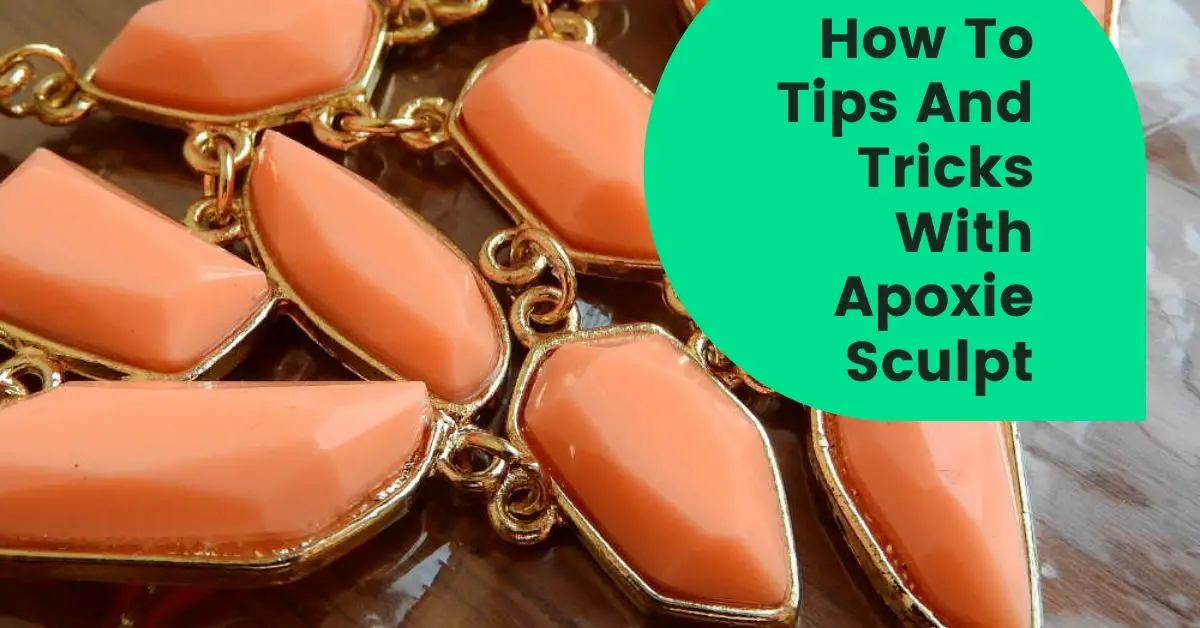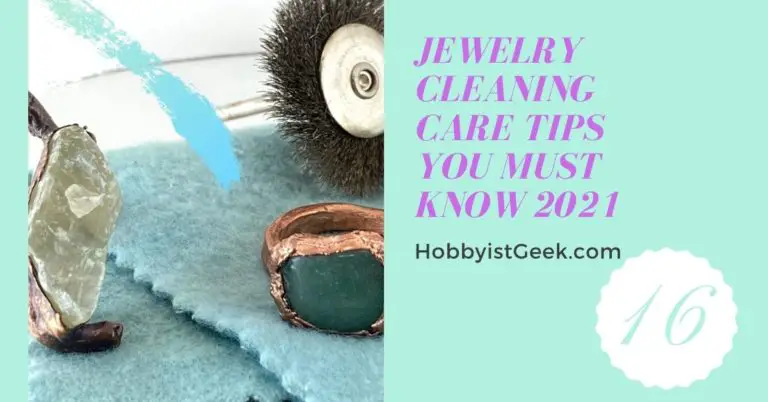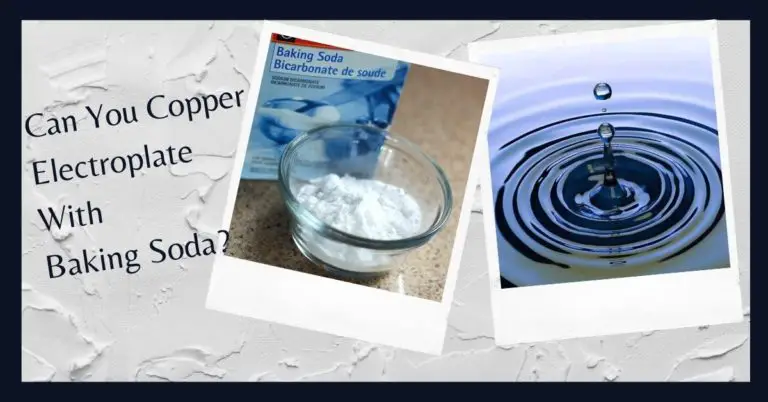How To Tips And Tricks With Apoxie Sculpt
Apoxie Sculpt, it’s a relatively unknown material amongst hobbyists, but it’s more than perfect for our electroforming projects! It combines the best parts of other materials to form an unmatched substance, that allows our creative minds to run free!
With Apoxie Sculpt anything is possible, but how do we use it, and what does it take to work with this material? We are going to learn all the How To Tips And Tricks With Apoxie Sculpt.
The answer to the question How-To, Tips And Tricks With Apoxie Sculpt.
What is Apoxie Sculpt? Apoxie Sculpt is a mixture between regular Polymer Clay and Epoxy Resin, it combines the best properties of these two to create the perfect substance to use to create our electroforming base piece.
Apoxie Sculpt has the incredible moldability of clay and the strength and adhesion of epoxy!
In this article we’ll give you all the tips and tricks you need to work with Apoxie Sculpt, we’ll take a look at what materials the substance sticks to, and so much more!
By the end, you’ll be able to create beautiful models with this very special substance in no time! Let’s jump right into the action!
Is Apoxie Sculpt Waterproof?
Before we can use the models we create as a base for our electroforming process, we’ll need to know if the material can handle the abuse that the electroforming process will put it through.
An important factor in this question is, is Apoxie Sculpt waterproof, as we’ll be placing it in a liquid environment throughout the electroforming process! Let’s have a look.
To answer this question, we can be very brief, yes, Apoxie Sculpt is 100% waterproof! After the complete curing process, it’s as waterproof as resin, and it’s perfectly suitable to be placed in the electroforming bath.
If you add water when working with Apoxie Sculpt it’ll soften the material, which can be beneficial in the modeling process, this won’t affect the strength after curing.
How to work with APOXIE SCULPT – Tutorial ~ Rainbows Tutorials
Is Apoxie Sculpt Heat Resistant?
In order to make practical items using electroforming and Apoxie Sculpt we need to be fully aware of all of the material’s different properties.
Therefore, we need to know, is Apoxie Sculpt heat resistant?
Once again, we can be rather plain and simple with our answer, yes, Apoxie Sculpt is heat resistant!
After the curing process, the material can withstand temperatures up to 350℉, or 177℃!
Applying heat can also dramatically increase the speed of the curing process, without influencing the strength of the final result.
Do note that you shouldn’t bake Apoxie Sculpt like you would regular polymer clay!
Is There A Substitute For Apoxie Sculpt?
If, for whatever reason, the idea of Apoxie Sculpt sounds attractive, but you’re looking for something different, it’s important to know about the alternatives that are out there!
Everyone has their own taste and you may end up liking an alternative more than Apoxie Sculpt, so let’s take a look at the possible substitutes!
Valid substitute epoxy clays for Apoxie Sculpt are materials like Milliput for example, this substance largely shares the same properties as Apoxie Sculpt.
If you’re looking to get it at your local hardware store looking for a plumber’s putty, or a plumber’s epoxy is a strong bet.
This also largely shares its characteristics with the Apoxie Sculpt we know and love!
Does Apoxie Sculpt Stick To Plastic?
In the next couple of paragraphs, we’ll be looking at the adhesive properties of Apoxie Sculpt, this is an important property as we can use it to create interesting models and therefore beautiful electroforming results!
First off, we’ll see if Apoxie Sculpt sticks to the very common material of plastic!
Since the adhesive properties of Apoxie Sculpt come from the epoxy part of the mixture, it sticks to pretty much everything!
This includes plastic, and therefore plastic tools as well, you can use this to your advantage to create interesting results, but it can be a bit of a pain sometimes!
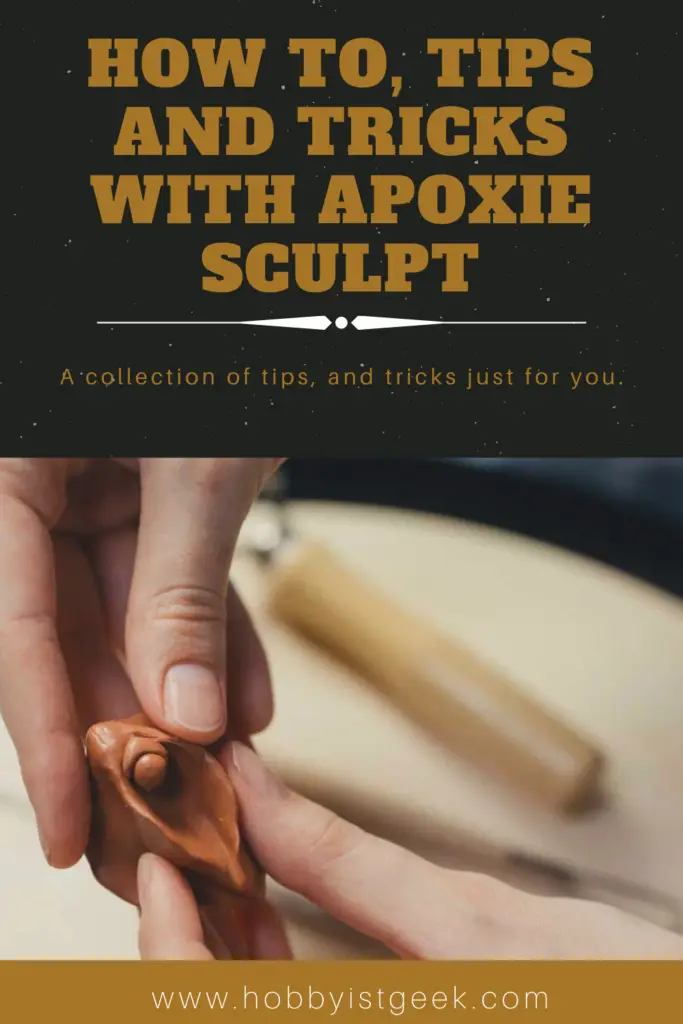
Does Apoxie Sculpt Stick To Glass?
Next up on our materials list, we have glass. Does Apoxie Sculpt stick to glass?
Generally speaking, glass is a difficult material for substances to stick to, but does Apoxie Sculpt break this habit, or does it follow the trend? Let’s have a look!
Apoxie Sculpt is actually one of the very few clay-like substances that does stick to glass surfaces, this allows for some really interesting uses!
You can incorporate transparent glass surfaces into your electroforming projects, and you can use see-through tools that stick to the Apoxie Sculpt to make it easier to work with, let your artistic freedom run free!
Does Apoxie Sculpt Stick To Silicone?
Furthermore, on our examination list of what materials Apoxie Sculpt sticks to, we have silicone!
Silicone is a notoriously difficult material to achieve good adhesion on, as its tremendous flexibility makes it difficult to achieve real tight adhesion, but can Apoxie Sculpt do it?
The answer to this one is a little more complicated, as Apoxie Sculpt can, in theory, stick to silicone, and it does it very well.
Problems start occurring however when the flexible nature of silicone is put to the test, if the silicone bends the Apoxie Sculpt loses its adhesion and comes off in most cases.
This makes using silicone and rubber tools very useful when working Apoxie Sculpt as you can take the material of the tools very easily!
Does Apoxie Sculpt Stick To Resin?
The final entry on our materials list, resin!
Does Apoxie Sculpt stick to resin? Resin has an incredibly smooth surface and is therefore generally hard to stick to, but Apoxie Sculpt has surprised us in the past, will it do it again? Let’s have a look!
As we’ve come to expect from Apoxie Sculpt by now, it has surprised us again! Apoxie Sculpt sticks to cured resin like a charm, and this allows for some very interesting possibilities.
It gives us the freedom to combine our resin models with the Apoxie Sculpt to add fine details, or to revolutionize the design altogether!
Should You Handle Apoxie Sculpt With Gloves?
To answer this question, we can be very short, no, you don’t need gloves to work with Apoxie Sculpt.
Apoxie Sculpt is a non-toxic material and in theory shouldn’t do any harm to your body, because it’s non-toxic you can also safely use Apoxie Sculpt around children!
However, there are exceptions where you’d want to wear gloves!
Although Apoxie Sculpt is non-toxic, allergic reactions are still very much possible, if you experience any pain or other allergic symptoms on your hands, it’s recommended to wear gloves!
Sometimes gloves are also just nicer to work with, Apoxie Sculpt is, as we’ve discussed, an incredibly sticky material, and it’ll stick to your hands like no other!
Therefore, wearing gloves isn’t necessary for health reasons, but it is a matter of personal preference!
If you are interested in finding how to creat a electroformed Copper ring with Apoxie Sculpt and answer the question should you wear gloves click on the link.
Can Apoxie Sculpt Be Painted?
For the true artists among us, this is an important question.
This question is also rather essential for us electroforming artists, as we’ll need to make sure if our conductive paint will stick to the Apoxie Sculpt, if not we won’t be able to electroform!
As we can expect from a material that shares properties with polymer clay, Apoxie Sculpt is perfectly able to be painted, regular acrylic paint will do just fine to alter the color, whilst conductive paint can also be applied without any issues!
Do note though that painting isn’t the preferred way to change the color of Apoxie Sculpt, for that we’ll need to mix the material with color kits!
Can Apoxie Sculpt Be Sanded?
For the final tip on today’s list we’ll be looking at the issue of sanding Apoxie Sculpt.
Sanding can be incredibly useful to apply fine details and a professional finish, but some materials really don’t like to be sanded, is this the case with Apoxie Sculpt, or can it be sanded at will?
Let’s see!
Luckily for us, Apoxie Sculpt can be sanded, but you’ll have to wait until it’s fully cured, as sanding it before will just deform it, making your hours of work useless!
It’s recommended to sand it with a little bit of water as dry Apoxie Sculpt sticks to sandpaper like no other and quickly makes it useless.
The ability to sand allows us to add fine details and give our model a professional finish!
Please share this Pinterest pin.
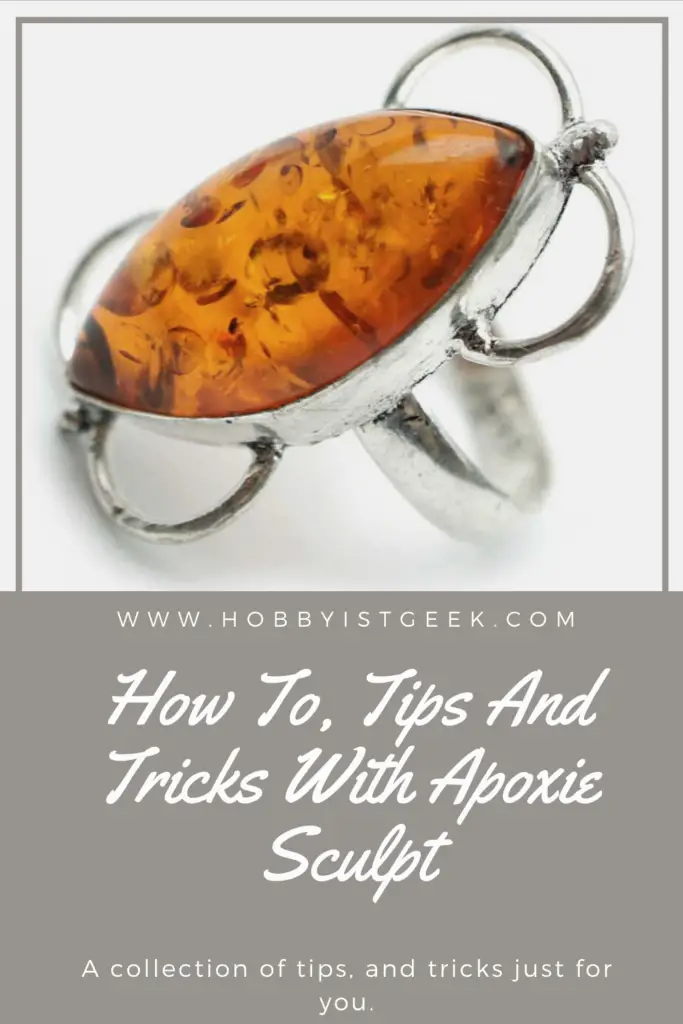
Final Thoughts For How To Tips And Tricks With Apoxie Sculpt
All in all Apoxie Sculpt is the perfect material to create our electroforming base pieces with, due to its best-of-both-worlds combination between polymer clay and epoxy resin, it’s easy to use and incredibly strong and adhesive.
Every feature you’d want to create your models allows for true artistic freedom, which is something every electroforming artist should be chasing!
Thank you for reading, and good luck modeling with Apoxie Sculpt!
Electroforming: The Ultimate Guide Check It Out!
If you want more information I have a blog post on Can You Electroform Polymer Clay?
I hope you enjoyed reading How-To, Tips, And Tricks With Apoxie Sculpt. I hope you enjoyed reading How-To, Tips, And Tricks With Apoxie Sculpt.
Sources In MLA Format:
“Do You Need Gloves with Epoxy Clay or Not?” The Rocketry Forum, www.rocketryforum.com/threads/do-you-need-gloves-with-epoxy-clay-or-not.22887/.
“FAQ – Aves: Maker of Fine Clays and Maches, Apoxie Sculpt, Epoxy Putty and More.” Aves, avesstudio.com/pages/faq/.
Fozzie. “Aves Apoxie Sculpt Sanding Question.” Hobbyist Forums, 12 May 2011, www.hobbytalk.com/threads/aves-apoxie-sculpt-sanding-question.327241/#:~:text=It%20has%20a%20long%20working,leaving%20a%20lot%20less%20sanding.
Harsdorf, John. “Aves Apoxie Sculpt Beginner’s Guide – Aves: Maker of Fine Clays and Maches, Apoxie Sculpt, Epoxy Putty and More.” Aves, 7 June 2017, avesstudio.com/2016/12/aves-apoxie-sculpt-beginners-guide/#:~:text=It%20adheres%20to%20glass%2C%20metal,your%20hands%20and%20your%20tools.
Harsdorf, John. “Aves Apoxie Sculpt Beginner’s Guide – Aves: Maker of Fine Clays and Maches, Apoxie Sculpt, Epoxy Putty and More.” Aves, 7 June 2017, avesstudio.com/2016/12/aves-apoxie-sculpt-beginners-guide/.
Redmond. “Painting on Apoxie Sculpt? Painting Flat on Plastics…” One Sixth Warriors Forum, 12 Oct. 2014, www.onesixthwarriors.com/threads/painting-on-apoxie-sculpt-painting-flat-on-plastics-without-airbrush.791421/#:~:text=Acrylic%20paint%20should%20work%20just,have%20problem%20with%20brush%20strokes.
says, Tammie, et al. “Epoxy Clay Review: Apoxie Sculpt.” Craft Test Dummies, 16 May 2011, www.crafttestdummies.com/epoxy-clay-review-apoxie-sculpt/#:~:text=Apoxie%C2%AE%20Sculpt%20offers%20economy,with%200%25%20shrinkage%2Fcracking!
says, Tammie, et al. “Epoxy Clay Review: Apoxie Sculpt.” Craft Test Dummies, 16 May 2011, www.crafttestdummies.com/epoxy-clay-review-apoxie-sculpt/.
Sharpshooter55. “Apoxie Sculpt/Substitute?” RPF Costume and Prop Maker Community, RPF Costume and Prop Maker Community, 5 Oct. 2012, www.therpf.com/forums/threads/apoxie-sculpt-substitute.162353/#:~:text=Alternatives%20are%20Milliput%20or%20Plumber’s%20Epoxy%20in%20the%20tube.
- Jewelry Making Ideas: Seasonal Crystal Trends That Command Premium Prices - May 31, 2025
- Evil Eye Hand: Unveiling the Mystical Origins and Meanings - February 2, 2024
- Amegreen Amethyst Meaning: Discover the Hidden Magic! - February 2, 2024

